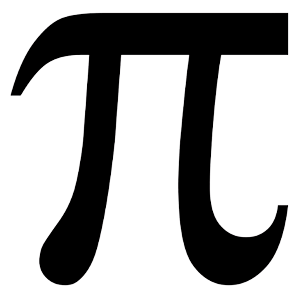As easy as pi
What is the one number that every marketer should know? Would it be, for example, your brand’s Net Promoter score? That’s an important one, no doubt about it, but it’s not branding’s No.1 number.
What about your brand’s value share, Voltage score or unprompted awareness? All worthy contenders, but none of them is the big one.
The number that should be etched on every marketer’s heart is 3.142. If that looks vaguely familiar, it’s because you came across it at school. It is the ratio of a circle’s circumference to its diameter, usually designated by that funny squiggle, a bit like the one adopted by the artist formerly known as The Artist Formerly Known As Prince. It is pi.
Or, at least, it is pi rounded to three decimal places, because this is a number that can go on a bit, if you let it. Rounded off to 10 decimal places, it’s 3.1415926536, which looks much more impressive although it is only infinitesimally more accurate. In fact, pi is a number that could go on for ever without achieving exactitude, an inexhaustible revelation of the law of diminishing returns.
Therein lies its significance to marketers. It is a reminder that, for all intellectual endeavours, there comes a time to stop fiddling and start implementing. Close enough is good enough. It’s right to ensure your new brand-positioning statement is original and competitive, but to believe that endless fine-tuning will make a significant difference is misguided.
Yet marketers will continue to find it hard to resist the urge to tweak. I know one pan-European business that spent 15 months developing a brand pyramid, came close to implementing it, then felt it could be ‘sharpened’ a little, and has continued to refine and enhance for two years now, with nothing having been manifested externally.
How does that happen? Ironically, part of the problem lies in the very thoroughness of the original intent. Marketing directors line up big stakeholder teams to gain widespread internal input into a new brand positioning. This lengthens the time it takes to get a workable definition agreed, and in that period, new heavyweights will inevitably have been recruited here and there in the organisation. These newcomers will get sight of the inchoate definition and will propose some ‘inputs’ of their own – a fresh pair of eyes just wanting to help.
Agency planners are another reliable source of obfuscation, brought into the process disrespectfully late in the day, and retaliating with ‘interpretations’ of some of the key phrases, based on their own consumer ‘insights’.
Then there is Holland. A market neither big enough to have been automatically included in the core-team line-up at the outset (like France and Germany), nor southern enough to merit ‘Latin’ inclusion (like Italy and Spain), nor small enough to be easily railroaded afterwards (like the Nordics). On receipt of the new definition, Holland will declare it insufficiently Dutch: ‘this will never work in our market.’ Denied the right to start again from scratch, they will accede only if addendums are incorporated that fit with their quirky world view.
And so it goes on, if you let it. So don’t. Before you embark on that new strategy or positioning, pin a big 3.142 to your wall, or turn your screensaver into a glorification of pi. It will guard against a slide into the abyss of intellectual branding endlessness.
3 The maximum number of brand values that your employees will actually remember
12 The average number of conversations per person per day that make reference to a brand, according to the latest academic research

Pi 3.1415926535897932384626433833
£26k Average annual income in the UK
£1.8k Skilled worker’s average annual income in China
£180-200k Average salary range for UK CMOs
$44.3bn The worth of the world’s most-valuable brand, Google, as calculated by BrandFinance
42 The answer to ‘life, the universe and everything’, revealed by the Deep Thought computer in Douglas Adams’ The Hitchhiker’s Guide to the Galaxy
